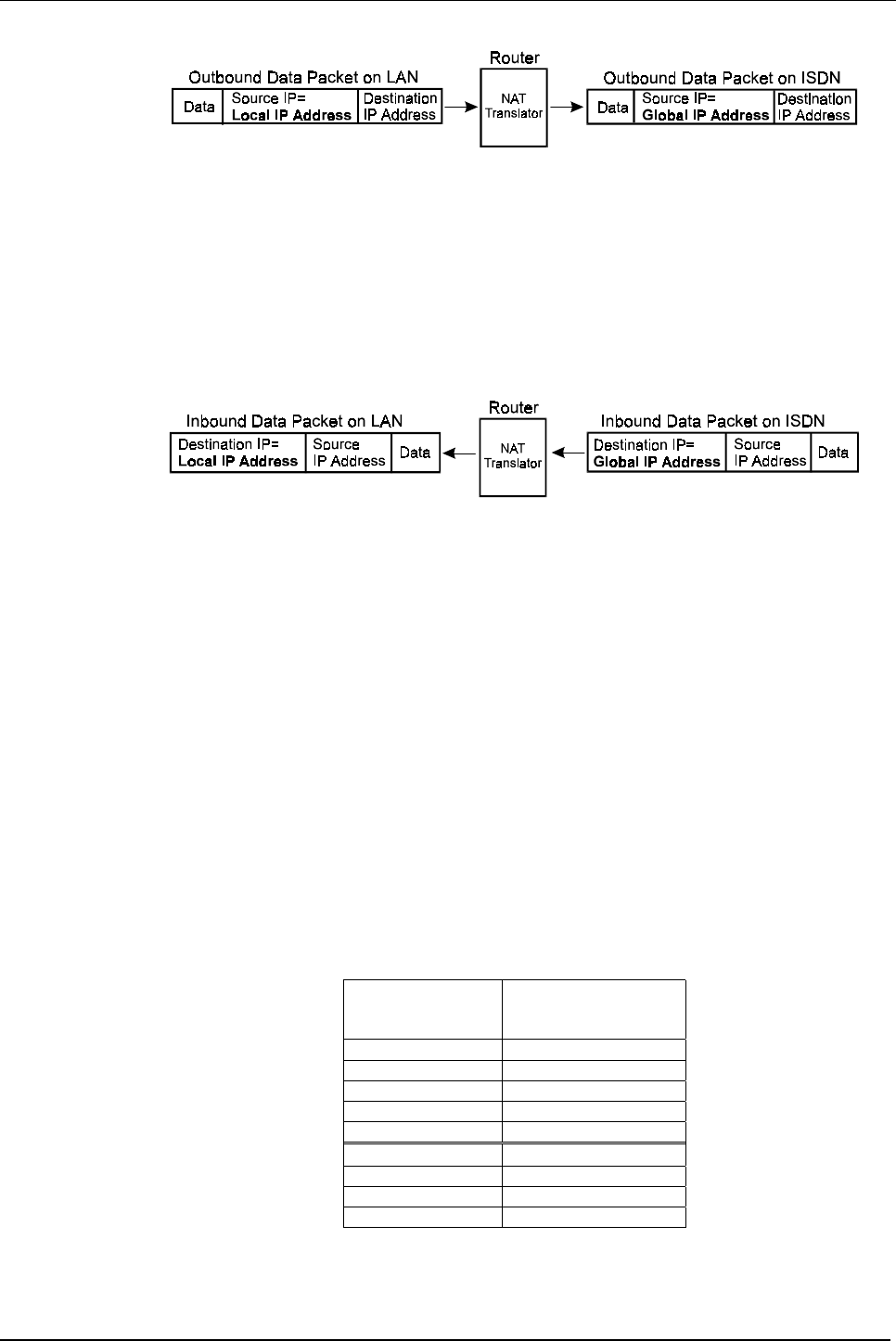
DI-206 ISDN Remote Router
52
In the Outgoing Data Packet above, the
Source IP address
is the IP address that is
translated by NAT. The
Destination IP Address
is the IP address of a computer
outside the private network, on the Internet for example. And the
Data
portion of the
packet is the information payload borne by the packet, for instance a request to view
a web page.
The router logs the changes made to the IP header in its NAT table. The NAT table
enables the router to send replies back to the local computer as shown below.
In the Inbound Data Packet above, the
Destination IP Address
is the IP address that
is translated by NAT. The
Source IP Address
is the IP address of a computer outside
the private network. And the
Data
portion of the packet is the information payload
borne by the packet, for example, the contents of a web page.
The actual information in the NAT table depends whether the router is implementing
NAT or NAPT.
NAT
This section discusses the NAT protocol as opposed to NAPT, which is discussed in
the next section.
NAT is the initial protocol set forth by RFC 1631 and provides a means in which
private networks can communicate with the Internet by using a small number of IP
addresses. In our discussion, we will use the example IP addresses listed in the table
below and the network diagram shown on page 51.
Global IP Addresses
(for use with NAT)
Local IP Addresses
(assigned to computers
on the local network)
200.100.50.1 192.168.100.2
200.100.50.2 192.168.100.3
200.100.50.3 192.168.100.4
200.100.50.4 192.168.100.5
200.100.50.5 192.168.100.6
192.168.100.7
192.168.100.8
192.168.100.9
192.168.100.10


















